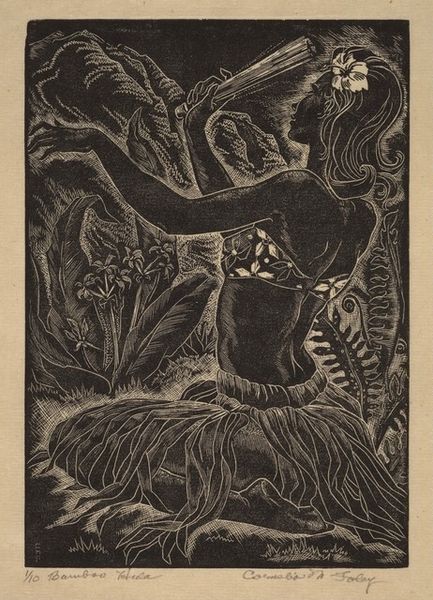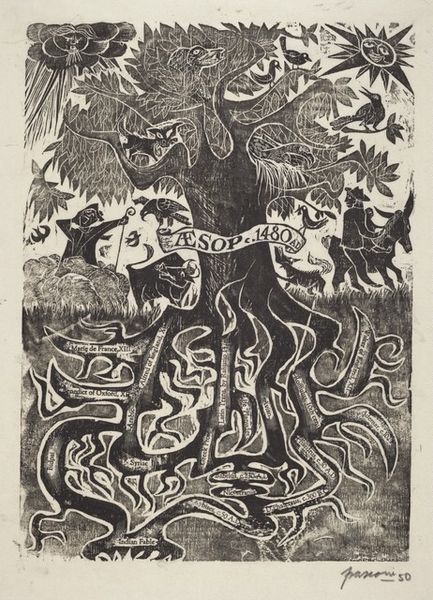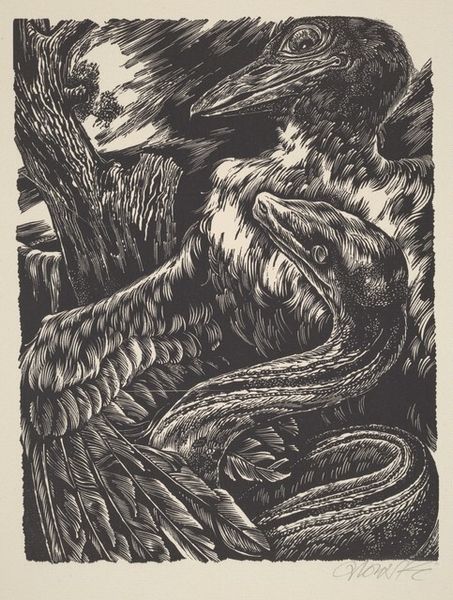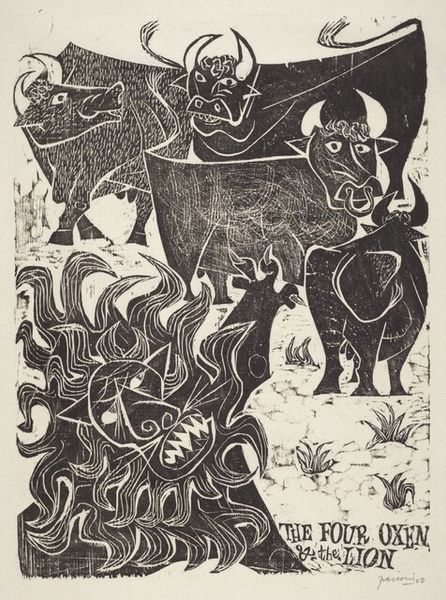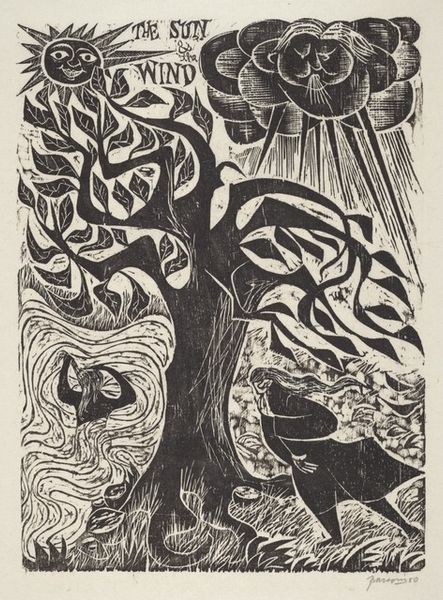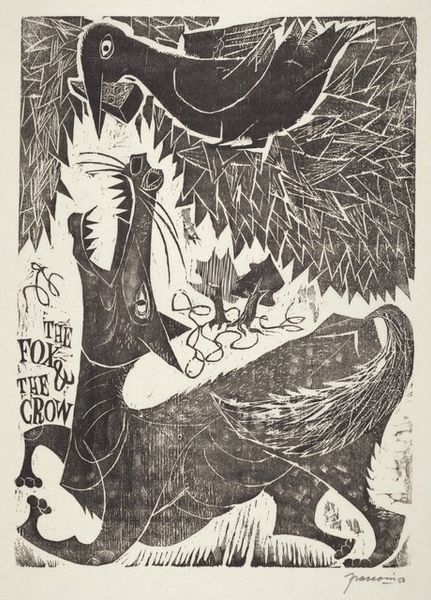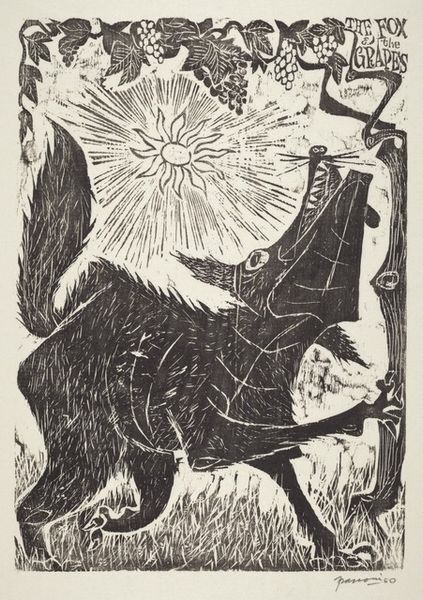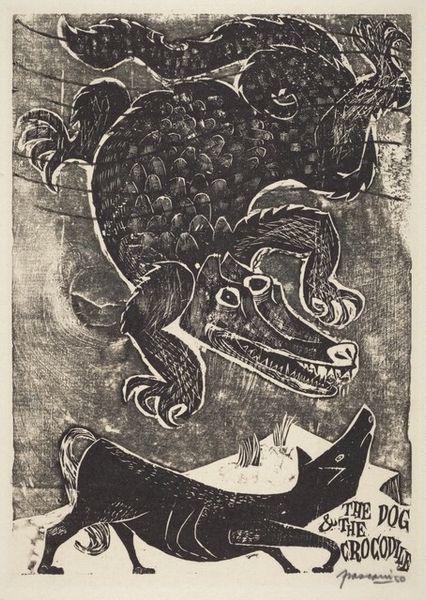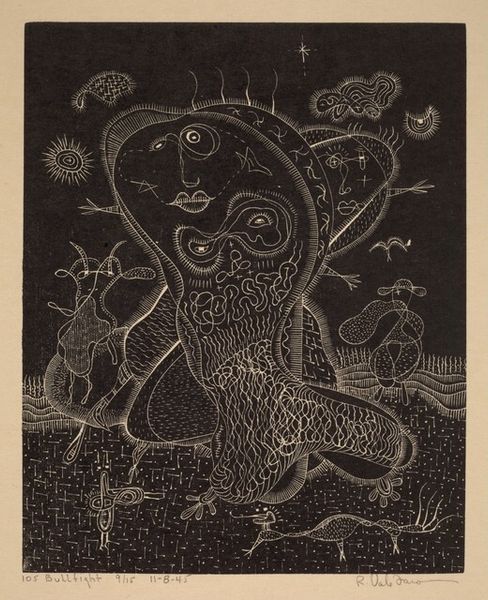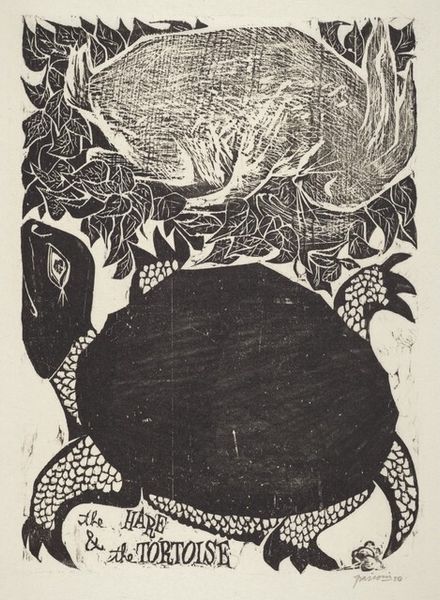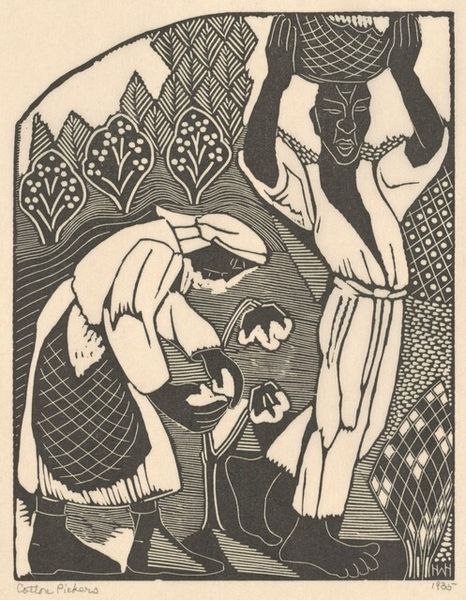
print, woodcut
#
narrative-art
# print
#
figuration
#
folk-art
#
woodcut
Copyright: National Gallery of Art: CC0 1.0
Curator: The dramatic contrast in this woodcut immediately draws the eye. There’s a starkness, a rawness to the image. Editor: I agree. Formally, the stark blacks and whites create a tension that speaks to its narrative. We're looking at Antonio Frasconi's 1950 work, "The Eagle, the Cat, and the Sow." Curator: Woodcut’s history, deeply entwined with printing and dissemination of imagery among the working classes, enriches this particular print. Notice how Frasconi utilized the inherent textures to capture, say, the eagle’s plumage, or the sow’s bristles. Each mark, meticulously carved from the block, adds meaning. The deliberate craft and labor resonate. Editor: Exactly. And this raw texture and simple execution serve the symbolism here. These animals – an eagle in the nest above, the cat in the tree, the sow with piglets below – feel like archetypes within a folk tale, distilled to their essential forms and attributes through this medium. Curator: There is an element of traditional printmaking. One can practically envision Frasconi using his tools, and we must note, the consumption here is quite important in that one is beholding an illustration that tells a story while serving as an homage to traditional woodcutting. What message do you discern in Frasconi's piece? The formal relationships between figures, I find fascinating. The tree dominating center-stage, becomes a point of tension and balance that each creature uses. Editor: I appreciate that read of it. My read leans on the visual tensions arising from that central void within the tree; the composition directs your focus right back to that black core again. There’s a constant return, like the iterative process inherent in the labor and print. This piece pulls at you as though you need to figure it out even though you can not. It asks the viewer to contemplate, perhaps indefinitely, the connections between nature and fable. Curator: A most apt observation. This interplay between form and fable leaves us reflecting on Frasconi’s mastery. Editor: Absolutely, it invites one into a story, etched and told.
Comments
No comments
Be the first to comment and join the conversation on the ultimate creative platform.

